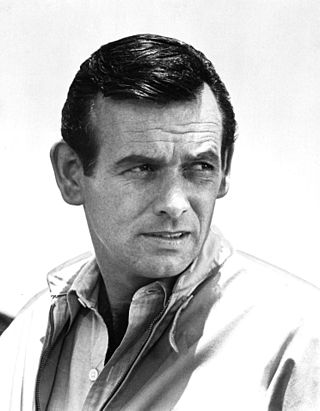
David Janssen was an American film and television actor who is best known for his starring role as Richard Kimble in the television series The Fugitive (1963–1967). Janssen also had the title roles in three other series: Richard Diamond, Private Detective; O'Hara, U.S. Treasury; and Harry O.
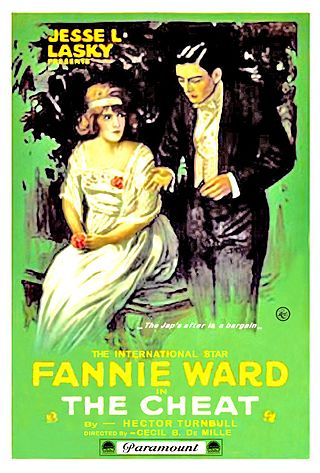
The Cheat is a 1915 American silent drama film directed by Cecil B. DeMille, starring Fannie Ward, Sessue Hayakawa, and Jack Dean, Ward's real-life husband.

Jeffrey Hunter was an American film and television actor and producer known for his roles in films such as The Searchers and King of Kings. On television, Hunter is known for his 1965 role as Captain Christopher Pike in the original pilot episode of Star Trek.

Kintarō Hayakawa, known professionally as Sessue Hayakawa, was a Japanese actor and a matinée idol. He was a popular star in Hollywood during the silent film era of the 1910s and early 1920s. Hayakawa was the first actor of Asian descent to achieve stardom as a leading man in the United States and Europe. His "broodingly handsome" good looks and typecasting as a sexually dominant villain made him a heartthrob among American women during a time of racial discrimination, and he became one of the first male sex symbols of Hollywood.

Phil Karlson was an American film director. Later noted as a film noir specialist, Karlson directed 99 River Street, Kansas City Confidential and Hell's Island, all with actor John Payne, in the early 1950s.
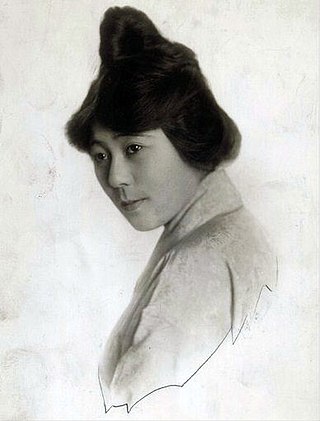
Tsuru Aoki was a Japanese stage and screen actress whose career was most prolific in the United States during the silent film era of the 1910s through the 1920s. Aoki may have been the first Asian actress to garner top billing in American motion pictures.

Guy Louis Gabaldon was a United States Marine who, at age 18, captured or persuaded to surrender over 1,300 Japanese soldiers and civilians during the battles for Saipan and Tinian islands in 1944 during World War II. Though Gabaldon was recommended for the Medal of Honor, he received the Silver Star, which was upgraded by the Marine Corps to the Navy Cross in 1960.

The Dragon Painter is a 1919 English language silent romance drama film. It is based on the novel of the same name, written by Mary McNeil Fenollosa. It stars Sessue Hayakawa as a young painter who believes that his fiancée, is a princess who has been captured and turned into a dragon. It was directed by William Worthington and filmed in Yosemite Valley, Yosemite National Park, and in the Japanese Tea Garden in Coronado, California.

Lane Nakano was a former American combat soldier turned actor.

The Devil's Claim is a 1920 American silent drama film starring Sessue Hayakawa and Colleen Moore. A print of this film survives.
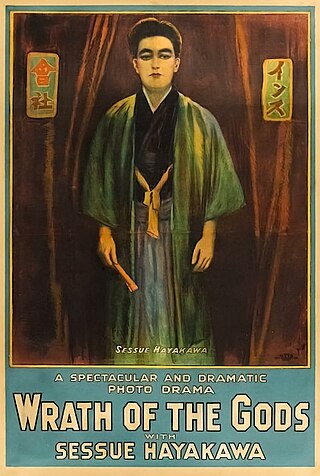
The Wrath of the Gods is a 1914 American silent drama film directed by Reginald Barker and starring Sessue Hayakawa, Tsuru Aoki, Frank Borzage, Thomas Kurihara and Henry Kotani. This was the first feature film appearance of Hayakawa and the directorial debut of Barker.

The Call of the East is a 1917 American silent drama film directed by George Melford and written by Beulah Marie Dix. The film stars Sessue Hayakawa, Tsuru Aoki, Jack Holt, Margaret Loomis, James Cruze, and Ernest Joy. The film was released on October 15, 1917, by Paramount Pictures.
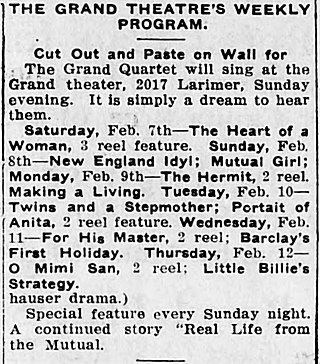
O Mimi San is a 1914 American short silent drama film directed by Charles Miller, featuring Tsuru Aoki in the title role and Sessue Hayakawa.

A Relic of Old Japan is a 1914 American silent short drama film directed by Reginald Barker and Thomas H. Ince. Sessue Hayakawa, Tsuru Aoki, Frank Borzage and Henry Kotani played important roles in the film.
The Vigil is a 1914 American short silent drama film directed by George Osborne and featuring Tsuru Aoki, Sessue Hayakawa, Thomas Kurihara and Mr. Yamato in prominent roles.
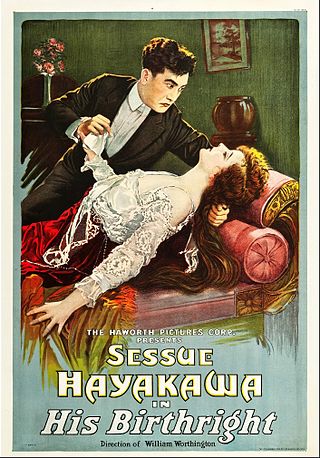
His Birthright is a 1918 American drama film directed by William Worthington for Haworth Pictures Corporation. Sessue Hayakawa produced the film and played the lead role. The rest of the cast includes Marin Sais, Howard Davies, Mary Anderson, and Hayakawa's wife Tsuru Aoki.

A Heart in Pawn is a 1919 American silent drama film directed by William Worthington. Sessue Hayakawa's Haworth Pictures Corporation produced the film and Worthington played the lead role along with Vola Vale and his wife Tsuru Aoki.

Bonds of Honor is a 1919 American silent film directed by William Worthington. Sessue Hayakawa's Haworth Pictures Corporation produced the film and he himself played the leading roles along with his wife Tsuru Aoki. Marin Sais, Dagmar Godowsky, Herschel Mayall, Toyo Fujita and M. Foshida also appeared in the film.
Sen Yan's Devotion is a 1924 British drama film directed and written by A.E. Coleby. Sessue Hayakawa, Tsuru Aoki, Fred Raynham, Jeff Barlow and Tom Coventry featured in the film.
Haworth Pictures Corporation was a film studio established by Japanese actor Sessue Hayakawa in March 1918.

















